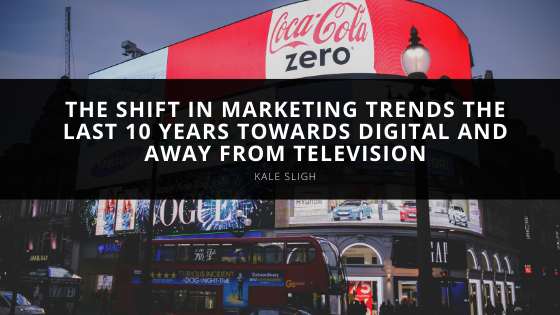Kale Sligh Discusses the Shift in Marketing Trends the last 10 years towards Digital and Away from Television

During his career, Kale Sligh has specialized in marketing strategy, digital transformation, product development and project management.
During his career, Kale Sligh has specialized in marketing strategy, digital transformation, product development and project management.
Kale Sligh is an experienced senior marketing director with broad expertise in marketing strategy and telecommunications. A self-starter employed at a law firm while he worked his way through the Master’s program at Mississippi College, focusing on Business Administration, he graduated Cum Laude for outstanding academic achievement. During his career, Kale Sligh has gained a wealth of knowledge and applicable information on the subject of advertising. While his primary focus is on his advertising career, he also works as a consultant to many different firms. Kale Sligh has earned Appy and Webby nominations for his outstanding work. While In the face of an ever-changing market, Kale Sligh uses over fifteen years of practical experience to form his thoughts on digital trends.
“Ten years ago TV was the eight hundred pound gorilla in the room that everyone was still pushing their ad expenses towards. As time has gone on, the industry has shifted, especially in the fortune 100, from traditional media to digital. ” Says Kale Sligh. In the last few years, online ads have overtaken TV ads as the number one advertisement format. The numbers are favoring digital to continue to grow. Just a few years back, TV was considered the most critical way to reach viewers and potential customers. But with the advancement of technology, digital marketing has become the revolutionary forefront of advertising. “The changes were gradual at first but fast forward a decade and the entire landscape has been transformed. The content creation is incredibly targeted and is helping businesses calculate the Return on Investment because end users are digesting content on so many platforms that can all be measured in real time.”
“TV didn’t die perse, just shifted to match consumer trends.” Says Kale Sligh. Television is still popular with a mass audience and allows for a message to spread very quickly. The accessibility and ease of TV is key to the selling point of the medium. Significant events like the Super Bowl, the Olympics, and award shows still bring in large numbers that digital cannot match. “Television advertising is still an important part of the marketing funnel. The key is to find out where your customers are consuming this media and creating a balanced media mix to drive those customers through the entire funnel.” Says Kale Sligh.
Digital marketing, on the other hand, can contain more detailed information and allow interactivity within its ads to create a more personalized and individualized experience. “While it is very fragmented, there are so many strategies companies can leverage to target their specific market and even more backend tools to calculate and track the Return on Investment.” Says Sligh. But, Kale Sligh does not fear the changing market. He instead heralds it as a time of opportunity, saying it is “Exciting to be at the forefront of an industry and a valuable experience to see how the top companies adapt and how smaller firms create new niches.”
Kale Sligh says that the key to successful marketing is “to understand who your customer is and what is the best message and method is to reach them. Then build an efficient advertising strategy that doesn’t focus on isolated tactics, but rather what is the optimal media mix to drive customers through the marketing funnel.”
Comments
Post a Comment